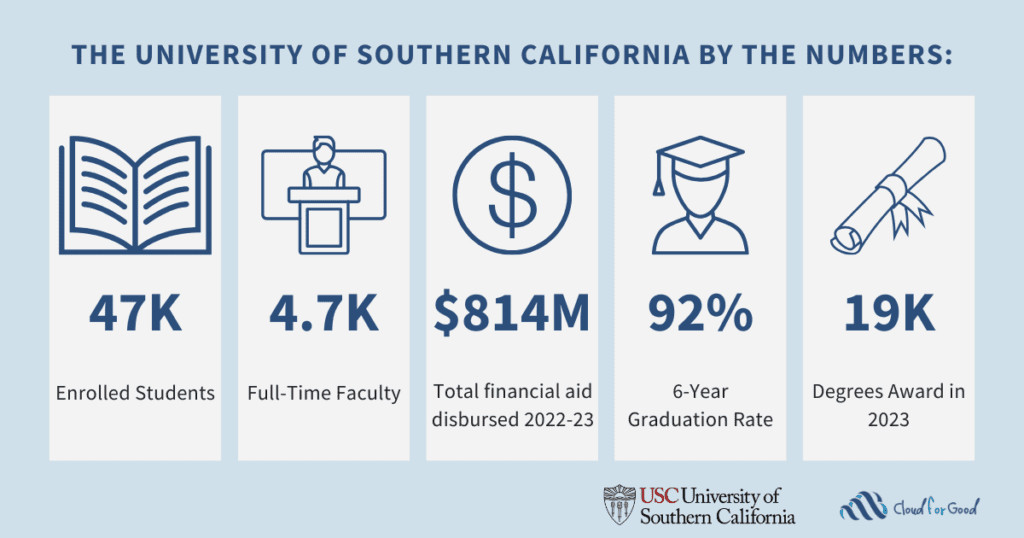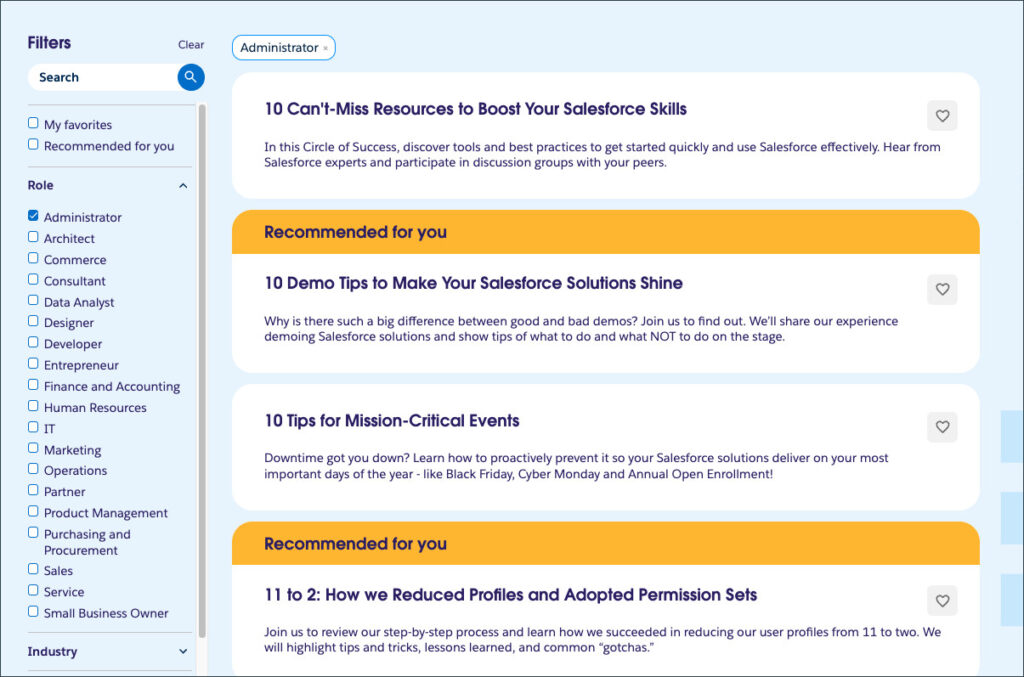Add learning and development to the list of business functions that AI is turning on its head.
Companies are adopting artificial intelligence (AI) at such a frenetic pace that the half-life of AI skills has shrunk to a fraction of what it once was. The old model of corporate training, designed to roll out over months or even years, no longer fits the needs of a world — and workforce — that’s changing so fast. That means learning and development (L&D), the business function that provides training and resources to help workers succeed, needs to rethink its approach.
“I think [L&D] needs to fundamentally change,” said Meredith Brown, senior vice president of Trailhead and Community at Salesforce. “There are elements of traditional L&D that work, but it cannot be the only way.”
The fix? Close the skills gap with agile, personalized, and ongoing learning. Companies that embrace this are already seeing big payoffs. A recent Slack survey found that employees who’ve had AI training are up to 19 times more likely to say AI boosts their productivity. Without that training, the survey said, employees may not take full advantage of AI.
The demand for an AI-literate workforce is acute, and it’s felt across all workgroups, from the technical teams building the models to business users throughout the company. This points to a broader change in what it means to be a modern, high-performing employee. According to a recent Mckinsey report, “For organizations to perform at their best, all employees need to be techies.”
Why traditional learning is no longer enough
The usual approaches to training, like workshops, seminars, and self-directed learning, don’t cut it in the AI era — not because they’re poorly designed, but because they were built for a world that no longer exists.
These old models rely on annual planning cycles that produce comprehensive courses for skills expected to last for years. That worked in an era of relative stability marked by longer upgrade cycles. Today, the half-life of AI skills has shortened. By the time you complete an AI course — which can, itself, take months to develop — the tools it covers may already be outdated.
Even if the content is still relevant, the format is inconvenient. Employees typically have to pause their work, log into a platform, find the right course, and carve out time to take it. Learning becomes a scheduled event, not a regular part of the workday. Some people might even try to squeeze it into off-hours, which only feeds the growing epidemic of the infinite workday, and could accelerate burnout. And the gap between learning and doing means it’s all too easy to forget what you’ve learned — just when you need it most.
How to rethink learning for the AI era
Instead of building rigid curricula whose success is defined by delivery and completion rates, companies should focus on how quickly employees can use new skills in their daily work.
How fast can you make an employee effective at a new AI-driven task? If your competitors can upskill their sales team on an AI-powered forecasting tool in two weeks, and your company takes three months, you’ve probably lost your edge. Here are four ways you can regain it.
1. Keep learning content fresh
Brown says many companies struggle to keep their learning content in sync with the rapid pace of AI.
“It becomes outdated pretty fast, so you need tools and processes that help you be agile, so you can change content as the technology changes,” she said.
Her team is constantly looking for ways to keep content fresh — including, ironically, using AI.
“Our team can ask an AI agent to do deep research to figure out what’s changed in the curriculum,” she said. “The human is always on top of it, but we can save them lots of research time.”
You might also consider micro-learning as a way to keep content fresh. Instead of offering one huge course, create a playlist of two-to-five-minute videos or interactive lessons, each focused on a single skill, like how to use an AI tool’s summarize feature, or how to use AI to analyze a presentation. As the technology evolves, you can update these snippets in hours. This agility means your learning library stays in sync with the speed of AI.
2. Embed learning into workflows
Have you ever sat through a training session, felt like you grasped it, and then, weeks later, drawn a blank when you had to apply what you learned? That’s the problem with one-and-done learning. It delivers information out of context, far from the moment of need, so it’s easy to forget and hard to apply. In the age of AI, where tools and best practices evolve faster than ever, the gap between learning and doing becomes even more costly.
According to Training Industry, a resource for learning professionals, “Being able to apply relevant learning immediately fosters a culture of continuous learning and makes it far more likely that the learning, and how to apply it, will be remembered for future use.”
That’s why embedding learning into everyday workflows is so effective.
Salesforce’s Agentforce Sales Coach, for example, gives sales reps smart, real-time coaching based on what stage their deal is in.
Early on, Agentforce Sales Coach can review a seller’s pitch and offer targeted feedback through an opportunity coaching module. During the negotiation or proposal stage, it can role-play a customer, asking tough questions to help the rep sharpen their approach.
What makes the feedback smart? Agentforce cross-checks the conversation against the prospect’s data in your customer relationship management (CRM) system, so the coaching is grounded in real context, not hypotheticals. Salesforce is considering other AI-based coaches for marketing and service.
Just-in-time learning is still evolving, but Slack, where many employees already spend much of their day, is an ideal delivery channel. With Slackbots or custom workflows, you can serve up curated content or internal resources right when it’s needed — no tab switching or portal searches required.
The McKinsey report notes that, “The future of learning isn’t about adding more training on top of work; it’s about reimagining work itself as inherently developmental. In this new paradigm, learning is not a ‘go away and do’ activity but a seamless, integrated part of the work experience — personalized, continuous, and directly tied to business outcomes.”
3. Try new formats and assessments
Want to bore your employees into a learning-based fog? Keep exclusively offering passive training like lectures and videos. When it comes to learning, this one-way, static approach just doesn’t stick. What does? On-demand and interactive experiences that learners can immediately apply to their work.
Consider different formats, like voice. Salesforce offers over two dozen on-demand Trailcasts, in which users can listen to select Trailhead modules, either online or on the Trailhead GO mobile app.
“We also need to think about how to bring in interactivity,” said Brown. “How do you engage the learner? How do you make them part of the learning experience so you make sure that skill is transferring?”
One way to drive that engagement is by turning content into a dynamic conversation. Google’s NotebookLM lets you deliver interactive learning as a podcast-style conversation between two AI voices that discuss a particular training subject. The interactive part? You can ask questions about the content, have the AI explain complex concepts, or brainstorm ideas. It’s like having a smart conversation with your learning material.
New training methods require new ways of measuring success. Tracking enrollment and course completion is important, but doesn’t provide a complete picture. What’s more important is whether employees can actually use the skills they’ve been taught.
“We want to change the way we do assessments,” said Brown. “Traditionally, you’d get to the end [of a learning module] and take a quiz, but have you really learned what you needed to, or did you just skim for the information in the quiz so you’d pass?”
4. Make it personal
The days of one-size-fits-all learning are over. Standardized courses worked when everyone was expected to learn the same way, but employees aren’t interchangeable parts with the same learning styles. The AI era calls for a shift to mass personalization: training that can be adapted to each person’s skills, goals, pace, and style.
Salesforce’s Career Connect puts this concept into action. It’s an AI-powered tool that helps employees identify skills gaps, receive personalized learning recommendations, and discover different roles aligned with their capabilities and aspirations. This makes learning efficient and much more relevant.
But a personalized approach isn’t just good for workers. A recent LinkedIn Learning report said companies that invest in both personalized AI upskilling and career development get the biggest returns. Specifically, they’re 42% more likely to lead in AI adoption compared to those who focus on one or the other.
Learning must keep pace with AI
In the age of AI, learning is a great hedge. In the LinkedIn survey, the percentage of people who said learning helps them adapt amid change rose from 49% to 68% in just three years. But the old L&D model isn’t built for a world that seems to reinvent itself every few months.
The new model of learning is a continuous, real-time helper. It’s embedded in the flow of work, and it’s fresh, contextual, and personalized. And all the new strategies it employs — AI-powered content, in-the-moment coaching, personalized career paths — serve one simple but powerful goal: Meet your employees where they are.
Doing this shifts responsibility from the employee to the company. The burden is no longer on the employee to keep up with their training, even if it means working after hours. It’s on the company to build a supportive environment where learning and doing happen side by side.
In the end, the most resilient and innovative companies may be the ones with the most adaptive learning culture. Because in the AI era, your ability to out-learn the competition just might be your biggest advantage.
What’s your agentic AI strategy?
Our playbook is your free guide to becoming an agentic enterprise. Learn about use cases, deployment, and AI skills — and download interactive worksheets for your team.








